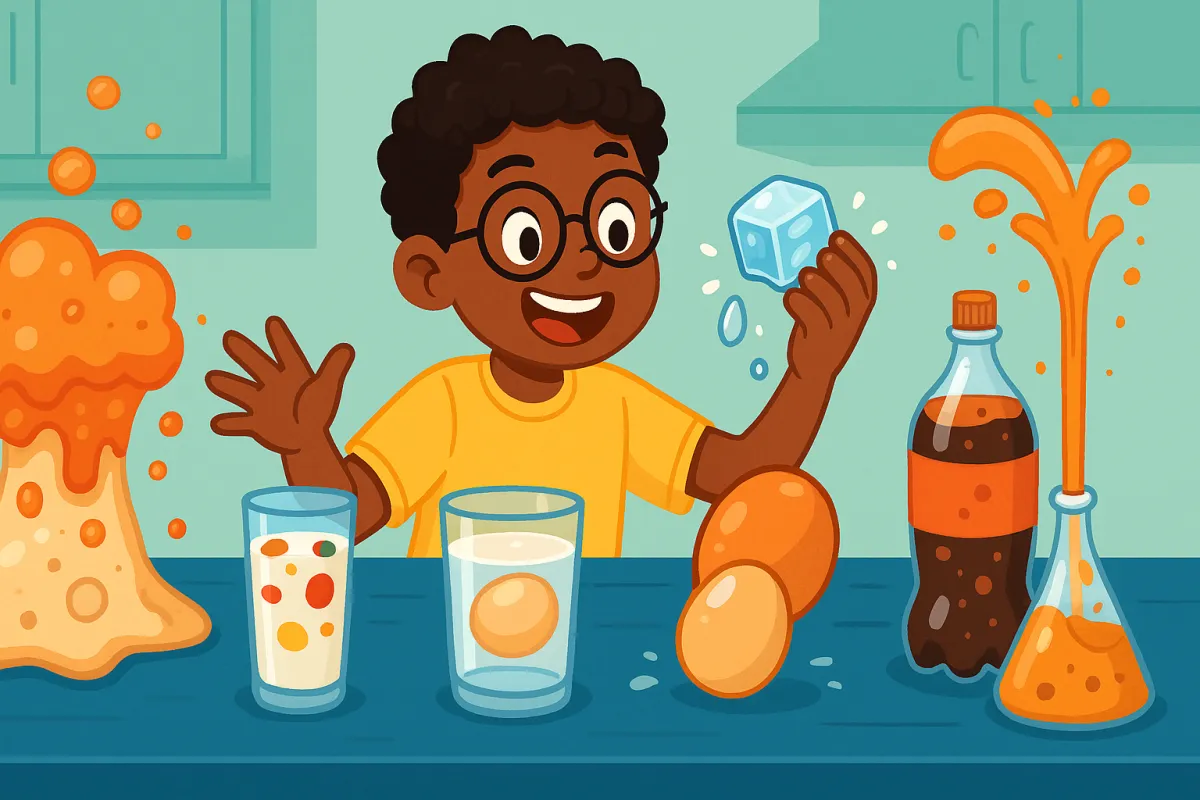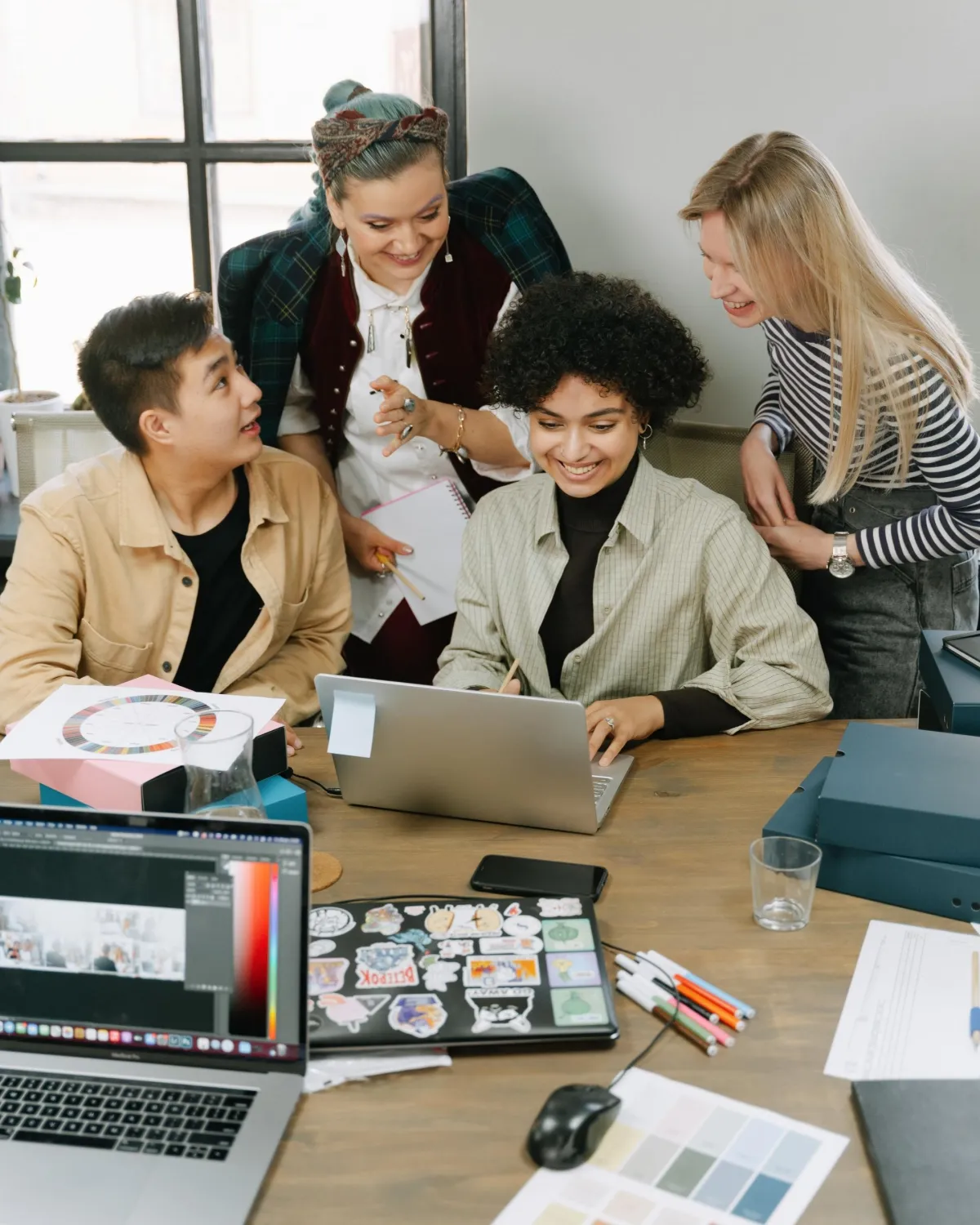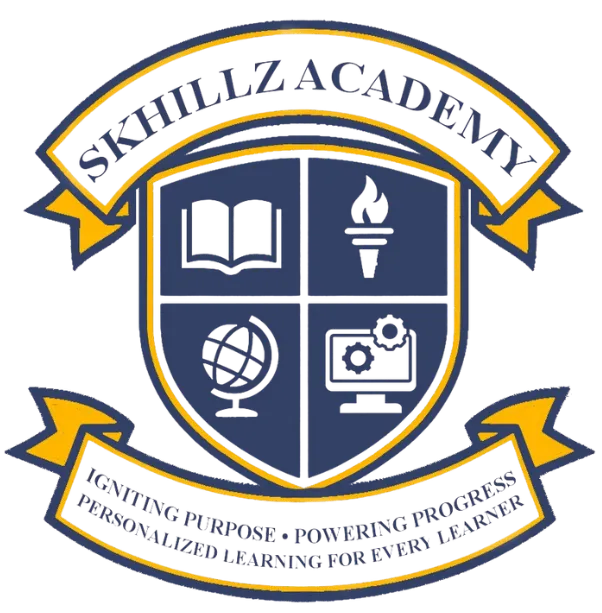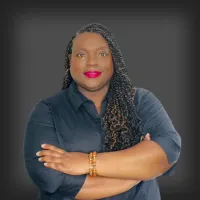Skhillz Academy Blog

5 Everyday Kitchen Experiments That Teach Real Science Concepts
Turn Everyday Moments into Mind-Blowing Learning Opportunities
The kitchen isn’t just for cooking—it’s a hands-on science lab that doesn’t require fancy tools or a degree in chemistry. As a science teacher (and a parent who’s cleaned up her fair share of sticky messes), I can confidently say this: your child can learn serious science while having serious fun—right at the kitchen counter.
Here are 5 easy experiments you can do at home that teach real science concepts, spark curiosity, and build the foundations of scientific thinking.
1. 🧪 Baking Soda + Vinegar Volcano
Concept: Acid-base reaction, gas formation (CO₂), and chemical change
What’s Happening:
Baking soda (sodium bicarbonate) is a base. Vinegar (acetic acid) is, you guessed it, an acid. When the two mix, they undergo a chemical reaction that creates carbon dioxide gas—that fizzy eruption you see is the gas rapidly escaping.
Why Do It:
Kids learn that some materials react when combined and that chemical changes create new substances—in this case, gas. It’s a perfect visual of transformation.
What to Ask Your Child:
What do you think will happen if we use lemon juice instead of vinegar? What do you notice when the gas is released?
2. 🧊 Melting Race: Ice vs. Surfaces
Concept: Heat transfer, thermal conductivity, states of matter
What’s Happening:
Different materials conduct heat at different rates. Metal pulls heat from the ice faster than plastic or wood because it’s a better thermal conductor. The ice melts faster on metal, slower on insulators like fabric or paper towels.
Why Do It:
It introduces states of matter (solid to liquid), energy transfer, and gives a great visual for how the environment affects materials.
What to Ask Your Child:
Why did the ice melt faster on the spoon? What’s different about each surface? Can we make a prediction and test it?
3. 🥚 Rubber Egg Experiment
Concept: Acid breaks down calcium; osmosis through a semipermeable membrane
What’s Happening:
The eggshell is mostly calcium carbonate, which reacts with vinegar (acid) and dissolves, leaving the egg membrane intact. Later, placing the "naked" egg in syrup or colored water shows osmosis—water moves in or out of the egg to balance concentration.
Why Do It:
This shows both chemical reaction (shell dissolving) and cell biology (how substances pass through membranes).
What to Ask Your Child:
What do you think will happen if we leave the egg in syrup overnight? What does this remind you of in your body?
4. 🥛 Magic Milk
Concept: Surface tension, fat molecules, and chemical interactions
What’s Happening:
Milk has fat molecules suspended in liquid. When dish soap touches the surface, it breaks surface tension and starts bonding with the fat. The movement causes the food coloring to swirl—making invisible molecules suddenly visible through motion.
Why Do It:
It teaches kids that molecules are always moving and interacting, even when we can’t see them—plus introduces surfactants (like soap).
What to Ask Your Child:
What happens when you use skim milk instead of whole? Why do you think the colors started moving?
5. 🥤 Soda & Mentos Geyser
Concept: Physical reaction, nucleation sites, gas release under pressure
What’s Happening:
Carbonated soda is full of dissolved CO₂ gas under pressure. Mentos candies have a rough surface, which provides lots of nucleation sites—tiny spots where gas rapidly forms bubbles. This reaction forces gas and liquid to shoot out like a geyser.
Why Do It:
This is a physical reaction, not a chemical one—no new substance is formed, but the change in state (gas escaping) is dramatic.
What to Ask Your Child:
Why do Mentos work better than sugar cubes? What would happen if we used diet soda vs. regular?
💬 Final Thought from a Science Teacher (and Mom)
When we shift from “Look at that!” to “Why did that happen?”—that’s when real learning begins.
Each of these experiments teaches core scientific principles kids will encounter again in middle and high school—but in a way that feels like play. And when learning feels like play, kids remember it for life.
✨ Want More Hands-On Science Ideas?
At Skhillz Academy, we turn curiosity into confidence through real-world, STREAM-based learning. Our students don’t just memorize science—they live it.
➡️ Explore our programs or download your free "Science at Home Starter Kit."
Let’s build brains, not boredom.
Frequently Asked Question
General Question
What makes Skhillz Academy different from traditional schools?
Skhillz is a fully online K–12 learning experience built for today’s learners. We combine live instruction, on-demand flexibility, tech-forward curriculum, and real-world readiness—without sacrificing connection, support, or academic rigor.
What types of programs do you offer?
We offer a full suite of programs including:
Kindergarten through 12th grade core education
Homeschool support
Individual courses
Summer school & credit recovery
AP & dual enrollment courses
NCAA-approved curriculum
Personalized tutoring & test prep
Are classes live or self-paced?
Both! Families can choose live instruction, self-paced modules, or a hybrid based on the student’s needs and schedule. All paths include access to certified educators and a personalized learning plan.
Can my child enroll mid-year?
Yes. We offer rolling admissions every quarter. Whether you're starting fresh or transferring from another school, your child can join when it works for you—even during summer.
Is Skhillz accredited?
Yes. We are aligned with national and state-level academic standards and are actively pursuing full accreditation. All high school students receive transcripts, credit tracking, and graduation pathway support.


888-429-5094
Business Hours:
Mon - Thu: 9AM EST - 6PM EST
Fri: 9AM - 3PM
Closed For Lunch: 1 PM EST - 2PM EST
Empowering future-ready learners with flexible, personalized
education that fits real life.
317 Edgewater Drive Ste. 458
Orlando, FL 32804, United States
CUSTOMER CARE
Subscribe to Skhillz Insights
Join our community and stay in the loop on exclusive courses, parent resources, enrollment windows, and student success tips.

